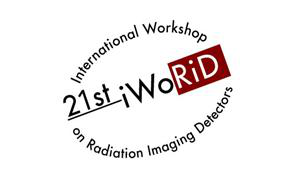Speaker
Description
The JUNGFRAU detector is a now established hybrid pixel detector developed at Paul ScherrerInstitute (PSI), featuring 75 μm pixel pitch with a charge integrating architecture1 designed for FELapplications2. Thanks to its dynamic gain switching mechanism it provides an extensive dynamicrange up to ~ 104 photons/pixel at 12 keV3. With an average noise of ~80 ENC rms for 10 μsintegration time, it offers single photon resolution above ~ 1 keV. An array of 16 memory cells perpixel makes it possible to store images at a repetition rate greater than 200 kfps, which allows thedetector to partially exploit the EuXFEL time structure. The combination of these features makesthe JUNGFRAU detector a promising candidate for several scientific instruments at the EuXFELfacility.The small pixel pitch grants enhanced spatial resolution in comparison to other high speed imagingdetectors available at EuXEL, which is of great advantage for Small Angle X-ray Scattering(SAXS) experiments like the ones performed at the High Energy Density (HED) instrument or forall spectroscopy applications. The Femtosecond X-ray Experiment (FXE) instrument exploits thisfeature, together with the compact dimensions of a single JUNGFRAU module, to setup a versatilesingle shot spectrometer mounted on a robotic arm.The combination of a large dynamic range and modular structure of the detector is fundamental fora large area camera for diffraction experiments, like the ones performed at the Single Particles,Clusters, and Biomolecules & Serial Femtosecond Crystallography (SPB/SFX) instrument. On theother hand, the excellent signal-to-noise ratio in the 3 – 16 keV range is fundamental forexperiments performed in the single-photon regime, like the X-ray Photon Correlation Spectroscopy(XPCS) and Coherent X-ray Diffraction Imaging (CXDI) which are the goals of the MaterialsImaging and Dynamics (MID) instrument. We will present the status of commissioning of the JUNGFRAU detector at the EuXFEL in generalterms and with focus on details specific for individual scientific experiments at EuXFEL. Eventhough the full implementation of the 16-memory cell operation mode of the detector currently is atan advanced experimental stage, particular focus will be given to the status of its implementation,its integration at the facility and results of the first tests.
1 “The JUNGFRAU Detector for Applications at Synchrotron Light Sources and XFELs”, Mozzanica A. et al., SYNCHROTRON RADIATION NEWS 31, 16 (2018)
2 “Operation and performance of the JUNGFRAU photon detector during first FEL and synchrotron experiments”, Redford S. et al, JOURNAL OF INSTRUMENTATION 13, C11006 (2018)
3 “First full dynamic range calibration of the JUNGFRAU photon detector”, Redford S. et al, JOURNAL OF INSTRUMENTATION 13, C01027 (2018)
